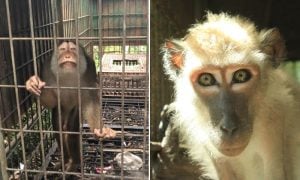In their continual quest for ways to protect our planet, scientists have developed new materials for clothing, towels, bedding and more that are far more environmentally-friendly than those of years past. Sustainable textiles may include substances that are recyclable and biodegradable, those produced via green manufacturing (no gas or chemical byproducts), and those made via methods that actually benefit the environment. The following textiles are ideal alternatives to synthetic and chemical-laden products:
- Hemp is both durable and highly sustainable. Much of it is produced by independent farmers in Romania, and it doesn’t create harmful byproducts. Bugs are not attracted to hemp, so no pesticides are involved. O Ecotextiles manufactures Hardy Organic Hemp; Oliveira Textiles uses a blend of seaweed, hemp, organic cotton, and twill for their products.
- A company called Knoll Textiles produces Abacus, another eco-innovation. Abacus is used to make upholstery and looks like wool — but amazingly, it’s woven from recycled polyester that’s created from recycled bottles and unused production scraps.
- Mushrooms have a meat-like consistency that’s fantastic in vegetarian and vegan recipes. But did you know that mushrooms are also processed to manufacture “leather?” Muskin is a brand of faux leather made from the tops of mushrooms. It’s so soft that it feels a bit like suede. Muskin is inexpensive to make, cruelty free, versatile, easy to produce, and sustainable.
- Piñatex is another faux leather brand, and converts pineapple leaves into a strong, versatile, and sustainable fabric that is ideal for shoes, handbags, and furniture. Piñatex contains no toxins.
- Papyrus Australia transforms bananas into wood using the waste trunk of the banana. Banana tree trunks are used in the production of paper, building construction, furniture, and packaging. The products are UV, water, and fire resistant.
- Halingdal Peace Silk, manufactured by Kvadrat, takes the suffering out of silk. The manufacturing process does not kill the silkworms like regular silk production, in which the critters are boiled alive. Instead, the worms leave their cocoons and silk is made from the remaining fibers. It’s manufactured in India and used to make pillows, quilts, duvet covers, and coverlets in gorgeous colors.
- Recycled cotton is another highly sustainable fabric, manufactured by collecting unused knit cuttings that are thrown out during T-shirt production.
- “Cotton” can also be made from corks and tree bark. Cork trees are grown in Mediterranean countries and are harvested approximately every nine years. Cork cotton is made into wallets, purses, clothing, bags, and upholstery for furniture. Meanwhile, bark cloth is sourced from Mutuba trees on farms in Uganda. Bark cloth is suitable for lampshades and car seats. The cloth can be leather-like or fleece-like depending on how it’s produced. It is completely organic.
- Climatex by Rohner Textil is made from ramie, a tropical flowering perennial. Ramie was used in ancient Egypt, and is made from recycled scraps. Ramie textile is biodegradable and fire retardant without toxins.
- Luna Textiles produces Eco Intelligent Polyester, a sustainable textile dyed with environmentally safe ingredients. It’s recyclable and does not contain metal antimony, a carcinogen.
- Sensuede is made from recycled polyester fibers like soda and water bottles. No toxins are used during production. It’s even stain resistant.
- Non-textile products are also using sustainable resources like sugar cane, recycled plastic trash, and algae. Last year Coca Cola introduced its all plant bottle made from sugar cane. Bottles are normally made from a petroleum base.
- In 2015 Adidas and Parley for the Oceans developed a sneaker made from plastic trash. The oceans are littered by plastic waste and anything produced from it will help clean out the water.
- A student in Iceland invented a water bottle made from red algae powder and water, making it biodegradable. Fifty percent of plastic is used only once, and biodegradable items are the perfect tools to prevent waste.
This trend of eco-friendly textiles is just beginning. Look for these products before buying traditional materials. The Earth will thank you.







